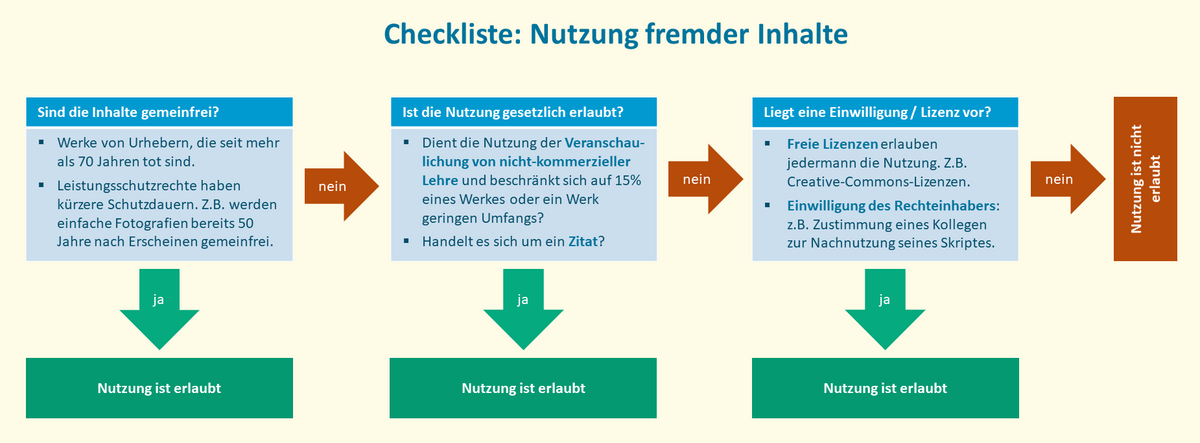What is protected under copyright law?
Protected works include:
personal intellectual productions that demonstrate a certain level of uniqueness, originality or individuality and that can be perceived with the senses.
Examples:
- Essays on a specific subject, monographs
- Films, podcasts, or photographs, graphics
- Paintings, sculptures, structures
Ideas and thoughts that are not in a physical form are not protected under copyright law. Everyday artisan work or routine tasks do not count as protected works (e.g. construction of modules for standard purposes, instruction manuals).
An originator is any natural person who produces a work using their own personal intellectual efforts. If several persons produce a work together, e.g. a joint publication, then they are co-originators.
Please note: Terms of copyright may still apply even if a work is not copyrighted. Related rights cover, for example, the process of producing a photograph, the investment in a database or a film. For example, photographs that do not demonstrate special individual or creative design are not generally considered to be photographic artwork but rather simply photographs. In such cases, copyright protection ends 50 years after the image was published.
Under what conditions can you use copyrighted material from others?
There are three constellations for using copyrighted materials from others in your teaching:
- If the term of copyright has ended, then a work falls into the public domain and can be used freely without the consent of the originator. This case is particularly relevant for historical topics, since copyright protection lasts for a very long period (70 years after the originator’s death).
- Use can be allowed by law. University teaching is granted certain particularly relevant privileges for the non-commercial provision of teaching as per § 60a UrhG and the right to citation as per § 51 UrhG.
- You can also use content in cases where the person with the respective rights gives consent or grants you the legal right of use (licence)
Photographs, graphics and other materials that are important for teaching purposes are increasingly being placed under free licence for reuse by the general public. The creative commons licences are particularly widespread, in which originators allows anyone to use their work for free. The work is, however, does not fall under the public domain. The conditions of the licence must be observed! E.g. with “CC BY” you need to give credit to the originator and (where possible) provide links to the respective original material and licence.
You can also get consent directly from the copyright holder. This is usually quite simple to do when other university teachers are involved, e.g. for reusing lecture scripts or teaching materials. However, when publishers and other commercial providers are involved, you will usually have to pay for licencing the material.
Are you permitted to post links to other people’s content?
If you are not legally permitted to use the copyrighted information on your own website or in your own documents, then you have the option of linking to external websites. This is particularly useful if a specific newspaper article is relevant for a course and the article is available online.
Please take care, however, that you do not link to illegal content! For example, it is illegal to link to copyrighted materials that where published online without the consent of the originator. You may not, for example, link to content on the SciHub platform. The decisive factor is whether you were aware or could reasonably have been aware that the linked content was illegal. We recommend informing users that the link will take them to an external website.

Image: Brettschneider / Braun: Using content from others for teaching purposes / CC BY 4.0
